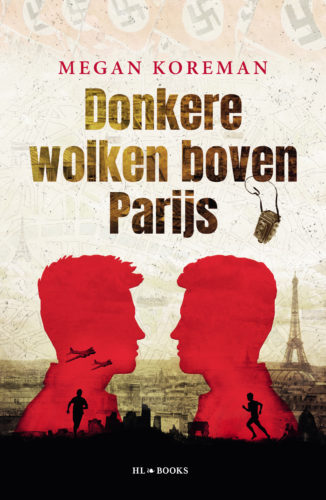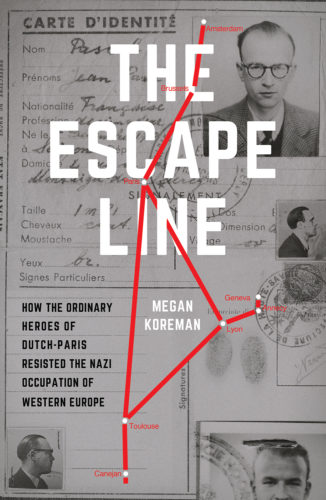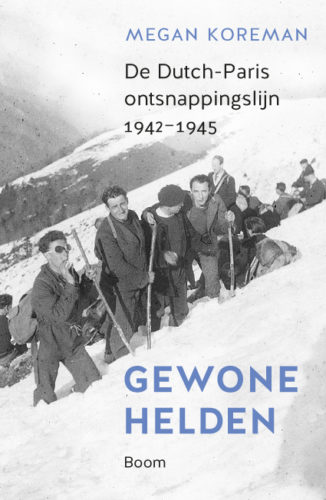Searching for the Dutch-Paris Escape Line
If you’ve seen the photos of Dutch-Paris fugitives crossing the Pyrenees into Spain in my book or on the WW2TV talk, you may be wondering why on earth those young men are standing in snow up to their knees way up in the mountains without so much as a warm hat let alone a decent coat or rugged footwear.
The answer is that all of them had to travel through cities on the regular trains to get to the mountains while looking like they weren’t actually going anywhere far from their home for any length of time. Young men in hiking gear heading toward the Spanish border would have been an automatic red flag for any police officer, gendarme, Milicien or German soldier in any train, train station or village. It just wasn’t safe to dress appropriately for the mountains on the way to the mountains. Nor was it possible to Read the rest of this entry »
- 0 Comments
- Tags: Border Crossings, Engelandvaarder, France, Spain
Vichy on the Spanish Border
During my talk about Dutch-Paris on WW2TV someone asked if Vichy patrolled the Franco-Spanish border as tightly at the Germans did. The answer is no, but possibly only because Vichy didn’t have the same resources as the Third Reich did.
The German occupation authorities posted a number of units in the forbidden zone of the Pyrenees including Gestapo agents and Austrian border guards who were used to patrolling on skiis. These and other German units in the area also enjoyed a near monopoly on the telephone system and on the roadways. They not only controlled most of the gasoline supply but they were able to set up check points and ambushes at key junctions.
Before the Germans arrived in full force, what did Vichy have? Their usual border patrols and the gendarmerie. Their enforcement is better described as “selective” than as “weak.” Selective because officers in the mountains had Read the rest of this entry »
- 0 Comments
- Tags: Border Crossings, France, Pyrenees, Spain
Wartime Shopping
A viewer of my talk about Dutch-Paris on WW2TV made an intriguing comment. I was talking about the difficulty of getting food for fugitives without ration cards. He or she quipped that it seems like crime syndicates would have been the go-to place for your shopping needs under the occupation. The answer to that is a very complicated sort-of.
The basic fact during the war was that food was in short supply. Governments tried to ameliorate that fact by imposing ration systems that were meant to make sure that everyone got his or her fair share of what was available at controlled prices. That attempt worked better in some countries than in others.
Let’s look at France only here. The ration system creaked along there but it did not provide sufficient calories for anyone to live on. A few sticklers tried but ended up literally starving. So the French people created their own supplemental “Système D”, meaning whatever you and your family came up with to get more food.
Système D was inherently illegal, but some parts Read the rest of this entry »
The Hard Part of Forging IDs
As we’ve discussed in the last two posts, it wasn’t all that hard to forge an identity card in France or Belgium. Pastors and university students did it. But it was actually much more complicated than just creating a document that would pass casual inspection.
The biggest problem with forged documents was that the police could and did call up the town hall where a suspect ID was issued to ask if so-and-so born on such-and-such a date was in their register. A clever forger made sure that the false ID was issued in a place where the records had been destroyed by fighting or were in an inaccessible occupation zone. The best IDs were “true-false” IDs, meaning that they were false but they used the name and birthdate of a true person who had died but was still on the population registry. That information was not easy to come by. Clerks at town halls had that information, and the power to neglect to strike individuals from their registries, which is why resistance groups liked to recruit them as forgers.
The other major difficulty was that a simple identity card was not Read the rest of this entry »
How were ID Documents Made?
In our last blog we were talking about who forged the false documents for resisters and other fugitives. From the admittedly small sample of Dutch-Paris, it appears that resisters did it themselves as one of the tasks required to resist. Any of you who are thinking about your own government-issued identity card in 2023 are probably wondering how on earth ordinary people managed to do that. They could only do it because ID’s were very different during the war than they are today.
A good part of the reason that IDs were so different then lays in politics. For example, it was notoriously difficult to forge Dutch ID cards because an overeager Dutch bureaucrat created a state of the art ID card that was very hard to forge. The Dutch government wasn’t terribly interested in the idea, but it didn’t take him any time at all to sell the Nazi occupation authorities on it. So this post is not about the Netherlands.
The Belgian government, on the other hand, very deliberately created Read the rest of this entry »
How many Forgers?
Let’s continue with questions from the comments on the side of my talk about Dutch-Paris on WW2TV on youtube.
Someone asked, very sensibly, how many good forgers were available to make false documents for the resistance and other fugitives. That’s a question no one will ever be able to answer with any certainty because forgers were criminals. They didn’t belong to a guild or union. They didn’t pay taxes or identify themselves as such on census forms.
It might be possible to count up the number of convictions in trials for forgery, but even that has problems. It would only count the individuals who were arrested and tried for forgery, not the total number of people engaged in forgery. And given the way the occupation authorities rolled, there is no doubt that some people arrested for forgery never had a trial although they may well have endured punishment.
The real question to ask is: Read the rest of this entry »
Linguists in Dutch-Paris
Here’s another good question from the chat section of my WW2TV talk about Dutch-Paris. How did the resisters in Dutch-Paris who came from the Netherlands, Belgium and France and the people they helped, who came from even more countries, talk to each other? Were they all linguists?
This is one of the many interesting things about Dutch-Paris: the line operated in four languages (and more currencies). Were they all polyglots? No, but a lot of them did speak more than one language.
Some people in the line didn’t need to speak more than one language. That would be anyone in a support role who didn’t interact directly with the fugitives the line was helping, such as people providing black market food or even lodging.
The people who were more likely to Read the rest of this entry »
New YA Novel Inspired by Dutch-Paris
I’m happy to announce that my new young adult historical novel inspired by the true stories of teenagers in Dutch-Paris has been beautifully translated into Dutch by Maarten Eliasar. It will be available from HL Books starting on 10 March 2023. I’m looking for an American agent but will let you know as soon as it’s available in the original English.
Here’s the link to order the book https://noordboek.nl/boek/donkere-wolken-boven-parijs/ Or stop by your local Dutch book shop!

Second Time over the Swiss Border
Following the last post about the Swiss border, here’s a story about some Dutch Jews who Dutch-Paris helped get into Switzerland. They were especially resourceful people who had managed to get out of the Netherlands, through Belgium, through Northern France and over the Demarcation Line pretty much on their own. When they got to Lyon they hired a Frenchman to get them over the final border into Switzerland.
The Frenchman had some colleagues who took the small group to the border village of Colonges-sous-Saleve and checked them in to a hotel. The passeurs told them to meet them outside in the dark of night. So they crept out of the hotel in their stocking feet. The passeurs got them through the fence on the Swiss border and gave them some vague directions of how to get through the fields that were a sort of no-mans-land between the border fence and the Swiss border guard posts. They were supposed to take the early morning tram into Geneva.
Instead, they ran into a Swiss border guard. Official policy at that particular time Read the rest of this entry »
The Swiss Border 1942
Some of the people who watched me talk about Dutch-Paris on WW2TV when it was first broadcast asked some interesting questions in the side comments. I couldn’t address them during the show, but I thought I’d answer a few of them here and in the next few posts. [link for the ww2tv show: https://www.youtube.com/watch?v=3vWmwfHMb7o]
Let’s start with a couple of questions about how Dutch-Paris smuggled refugees into Switzerland.
Was the Swiss border fence electrified? Not in the Genevois where Dutch-Paris operated. On the border between the canton of Geneva and the French department of Haute-Savoie the Swiss put up an 8’ high barbed wire fence. After a while they noticed that it was easy to crawl under it, so in some places they put up wooden obstacles along the bottom of the fence.
Why were the Swiss so anxious to stop people at the border? That’s a much discussed issue. I can’t give you Read the rest of this entry »
- 0 Comments
- Tags: Border Crossings, France, Switzerland

